
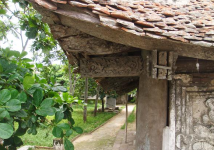
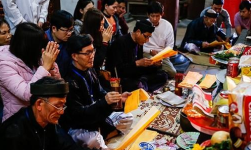
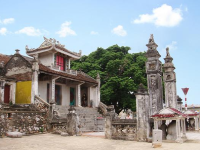
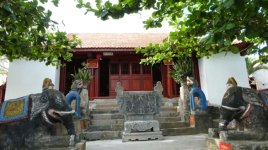
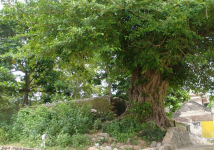
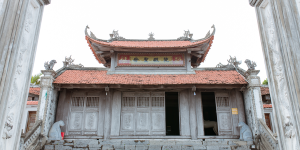
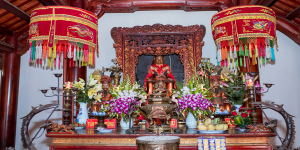
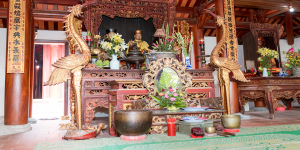
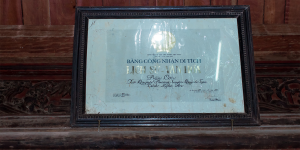
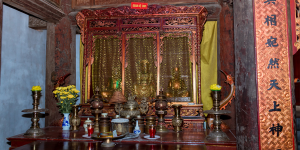
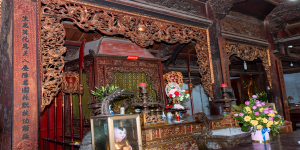
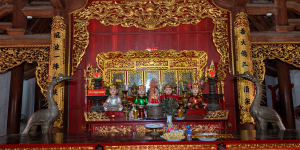
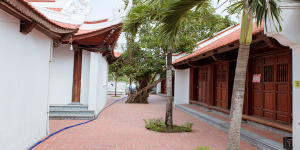
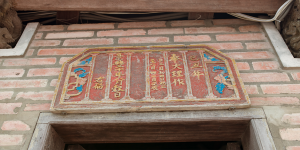
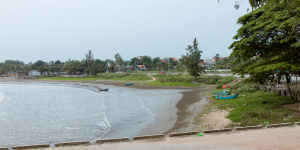
Camera tour
Price: Free
Time to visit a place: 120 phút
Open Time: 7:00 AM - Close Time: 6:00 PM
Address: Quynh Phuong Sub-district, Hoang Mai Town, Nghe An Province
CON TEMPLE
Con temple is located on Diec mound, close to Can Hai Gate, also known as Can Gate (Can Khau) in Huong Can commune, Hoang Mai canton, now known as Quynh Phuong ward, Hoang Mai town, Nghe An province. Con temple was built during the Tran Dynasty, is the place to worship Four Female Saints.
Four Female Saints are composed of Empress Dowager Duong Nguyet Qua, Princess Trieu Nguyet Khieu, Princess Trieu Nguyet Huong, and a nanny. Legend had it that: around 1229, the Yuan - Mong army gradually annexed the country. Southern Song in China, defeated the Song army in Nhai Tu Phu Voi Son. The situation was critical, the head of the bureaucracy Luc brought King De Binh (8 years old) and his family into the boat to run around in the sea. Unfortunate to encounter big waves and wind, the boat carrying the king of the Southern Song Dynasty was sunk in the East Sea. The bodies of Empress Dowager Duong Nguyet Qua, Princess Trieu Nguyet Khieu, Princess Trieu Nguyet Huong and a nanny drifted to Can gate.
The people of Can village saw the bodies of drowned women wearing aristocratic clothes, ruddy skin, and smelled like cinnamon orchids, so they were surprised, so they buried them well and built a temple. Since then, the villagers named their hometown as Huong Can, or Phuong Can.
Con temple has long been known as the most sacred temple among the four famous temples of Nghe An province: "First Con, secondaly Qua, thirdly Bach Ma, fourth Chieu Trung" Until now, this temple is still handed down by folk traditions that "whatever you pray, you will get anything": praying for good weather, good crops, catching a lot of fish and shrimp, asking for passing exams, and numerous descendants... all fulfilled. In particular, Con temple is also famous because it is a temple with 3 emperors, namely King Tran Anh Tong, King Le Thanh Tong, and King Quang Trung, before going to battle, they all came to offer incense to ask for help and were supported by the Four Female Saints to defeat the enemy. Commemorating the merits of the Four Female Saints, the kings all granted ordination, money to repair and embellish the temple to become more and more prestigious and majestic, becoming the center of Mother worship of the inhabitants of the sea.
In the past, the temple was made of cottages, built with bricks and tiles under the Tran Dynasty, developed on a large scale in the Le Dynasty, then restored many times under the Nguyen Dynasty… Before the August Revolution in 1945, the monument consisted of 4 main buildings arranged along the vertical axis in the same way as the snail terrace, and 5 outbuildings for sacrifices: palanquin, racing boat, canopy and place for people to prepare their offerings.
Currently, the temple still has a ritual building consisting of 2 storeys and 8 roofs. Through the temple gate to the courtyard, step up 11 steps is the singing and dancing hall. This is the most beautiful building of the relic, followed by the three halls of the lower, middle, and upper halls. Artifacts kept at the temple are quite large, rich in types, diverse in materials, and have high artistic value. It is a system of statues and animals made of stone, bronze and wood. In addition, there are other kinds of certificates, divine genealogy, couplets, characters, sacrifices, tools, palanquins, canopies made of wooden, ivory, bronze materials.…
About 1km from Con temple is Con Ngoai temple, located on the highest point of Than Lan mountain, close to Lach Con sea mouth. The temple to worship the king and mandarins of the Tong Dynasty is: De Binh, Truong The Kiet, Luc Tu Phu. These gods were formerly worshiped at Con Trong temple, but due to the Confucian concept of "men and women cannot be workshiped together", it was under Le Thanh Tong's time that a separate temple was built. The temple is now reconstructed with the upper hall, lower hall, left hall, right hall, and auxiliary works. At the temple, there is still a rich system of stone statues.
Con temple is not only the most sacred temple in Nghe An province, but also has beautiful landscapes, charming mountains & rivers and unique festivals that have been and are a tourist destination attracting tourists from all over the country to worship.
Ministry of Culture and Information (now known as Ministry of Culture, Sports and Tourism) recognized Con temple as a national historical - cultural relic in Decision No. 68/QD-BVHTT on January 29, 1993.
Ministry of Culture, Sports and Tourism issued Decision No. 2067/QDBVHTTDL dated June 13, 2016 included the Con Temple Festival into the List of National Intangible Cultural Heritage.
Distance: 4.28 km
Distance: 4.32 km
Distance: 4.33 km
Distance: 6.26 km
Distance: 6.27 km
Distance: 6.57 km
Distance: 7.14 km
Distance: 11.19 km
Distance: 11.53 km
Distance: 11.92 km
Distance: 13.65 km
Distance: 15.41 km
Distance: 1.27 km
Distance: 1.38 km
Distance: 1.40 km
Distance: 3.91 km
Distance: 4.17 km
Distance: 5.20 km
Distance: 14.10 km
Distance: 15.13 km
Distance: 15.40 km
Distance: 15.67 km
Distance: 17.71 km
Distance: 300 m
Distance: 1.08 km
Distance: 2.99 km
Distance: 4.14 km
Distance: 4.62 km
Distance: 5.50 km
Distance: 7.72 km
Distance: 8.21 km
Distance: 8.21 km
Distance: 11.68 km
Distance: 12.29 km
Distance: 12.40 km
Distance: 12.56 km
Distance: 12.58 km
Distance: 12.62 km
Distance: 580 m
Distance: 690 m
Distance: 930 m
Distance: 15.73 km
Distance: 15.75 km
Distance: 16.21 km
Distance: 16.72 km



0
No Comment!